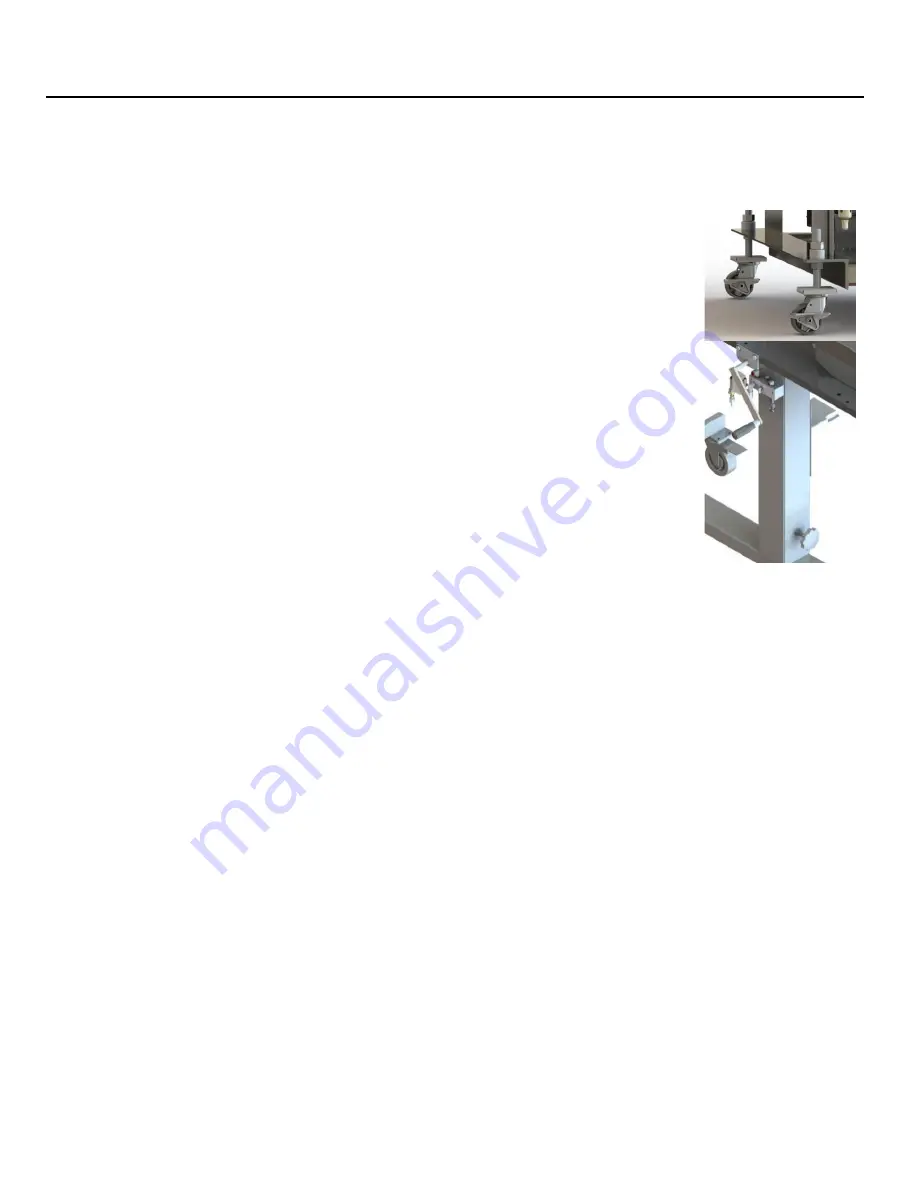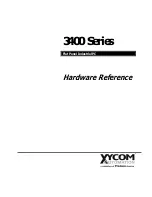
Setup
Receipt of Shipment:
Immediately upon arrival, the Hinds-Bock machine should be uncrated and inspected for any damage that may
have occurred during shipment. Check to see that all items listed on the packing sheet are included. If
damages or shortages are noted, the transportation company and the Hinds-Bock Corporation should be
notified immediately.
Applying Brakes:
After rolling the machine into position, apply brake levers on each of the casters
before connecting air.
Adjusting Machine Height:
Once the machine has been locked in position, the height may be adjusted. Do so by
loosening the star knob on the stand, and then turn the hand crank located on the
side of the machine. Once the desired height is achieved, make sure to tighten the
star knob to avoid accidental height changes.
Pre-Start Checkout:
Before applying air to the machine, or filling it with product, it should be disassembled, and all food contact
parts should be thoroughly sanitized and lubricated. See the Maintenance and Cleaning section of this manual
for instructions on cleaning.
When disassembling or reassembling components of the machine, never use force other than hand
pressure. It is not necessary to use hammers or mallets during any of the operational procedures on this
machine.
The air cylinders and connecting hoses must never be allowed to submerge in water or solvent during
the sanitation process, and should be kept out of direct high-pressure spray when the hopper is being
washed. If water or solvent is allowed inside the small plastic air lines connected to the cylinder,
premature damage and failure of the air cylinder will result.
Unless a quick release is present, there
should be no need to detach the air hoses from their respective assembly.
Whenever parts are removed from the machine for cleaning, maintenance, etc., they should be stored
in an area safe from damage.
If this machine is equipped with an electronic signal device, this unit along with the sensing head must
be removed and placed in a dry area while the machine is being washed and sanitized.
During the sanitation and re-lubricating process all parts, especially O-ring seals and gaskets, should be
inspected for nicks, cuts, cracks or other imperfections that might cause improper operation. Worn or cut O-
rings or seals should be replaced. Once the machine has been placed into operation, the product should serve
as a satisfactory lubricant.
As with any fine piece of equipment, the machine should be thoroughly cleaned and re-lubricated with
appropriate jelly lubricant at the end of each run. Lubrication should be accomplished with a good grade of
food approved jelly lubricant compatible with the product. It will then either be ready for another series of
production operations or be well lubricated to prevent the seals from drying out should it be out of operation
for a short period. Whenever maintenance, parts or service information are required and correspondence
Pg. 7

































